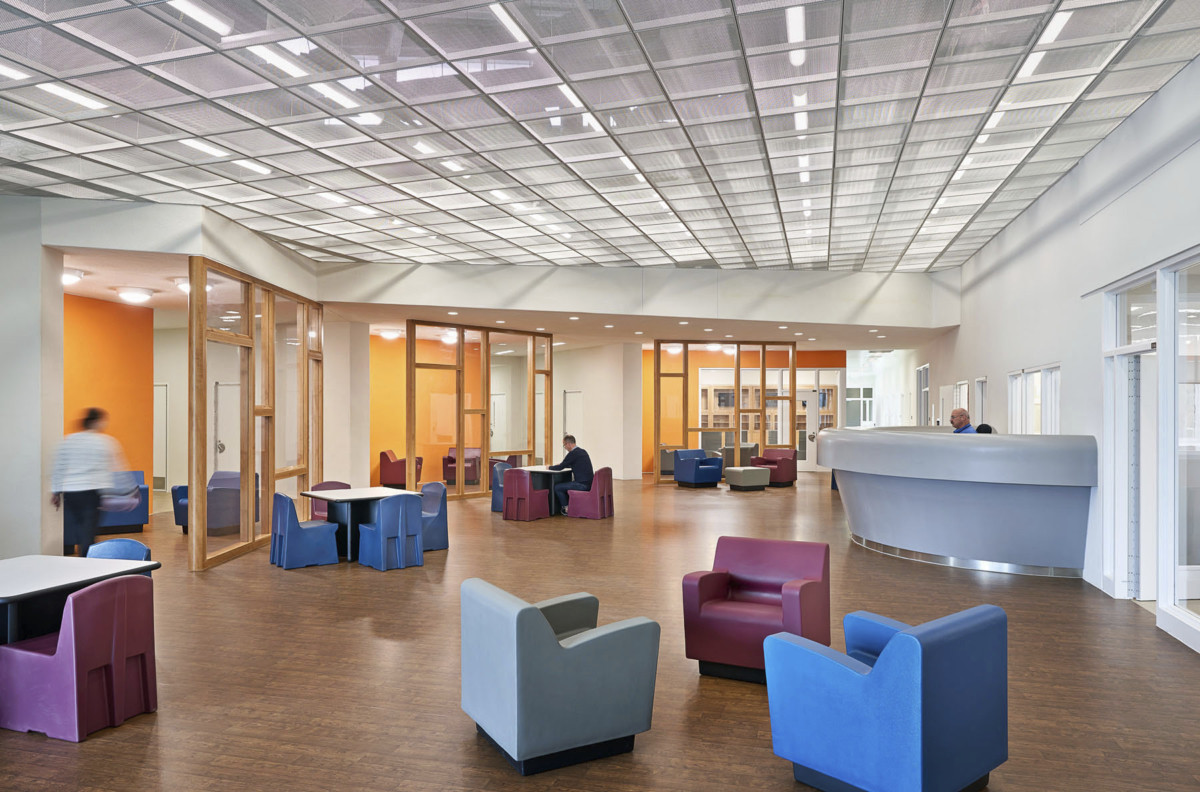 A conversation with behavioral health consultant Marty Martin-Forman, MSW, ACSW, LCSW, former Chief Operating Officer (COO) of Fulton State Hospital in Missouri, the oldest public mental health hospital west of the Mississippi River. Fulton is the only behavioral facility in the state with high-security beds for individuals found “not guilty by reason of mental disease or defect” at trial, those found mentally incompetent to stand trial or pretrial evaluations, and violent sexual predators.
A conversation with behavioral health consultant Marty Martin-Forman, MSW, ACSW, LCSW, former Chief Operating Officer (COO) of Fulton State Hospital in Missouri, the oldest public mental health hospital west of the Mississippi River. Fulton is the only behavioral facility in the state with high-security beds for individuals found “not guilty by reason of mental disease or defect” at trial, those found mentally incompetent to stand trial or pretrial evaluations, and violent sexual predators.
Safety for staff and patients is a primary concern, says Martin-Forman, but even high-security facilities don’t have to look institutional or like prisons. “Many old psychiatric hospitals were designed as just rows and rows of beds. Then, as we learned private rooms were better, we took the wards and made bedrooms,” Martin-Forman says. “The long dark hallways with low ceilings and poor sightlines became shorter, brighter hallways with a better line of sight. We also use technology to observe, to see things before they escalate into issues. We put in windows, letting in natural light. All these innovations have made inpatient facilities safer – as well as beautiful places to get better in.”
The Partnership: Martin-Forman is a Page behavioral health partner, advising project teams who work on psychiatric hospitals, behavioral health facilities, and behavioral health units in hospitals. Her first project with Page was as a client—Martin-Forman was COO of Fulton State Hospital when Page designed its new, 300-bed, high-security building, the Nixon Forensic Center. She also consulted on the design of a hospital floor for behavioral health patients at UCHealth in Colorado in 2020, and on a new facility for Central State Hospital in Virginia, which is ongoing. “I went from being the client to being part of the behavioral health design team,” she says.
Three Things to Know about Advances in Inpatient Mental Health Care
1. Treatments have improved a lot over the years. “Historically, I’m sure the intent was the same as today—to keep people safe and help them get better. But now we know that many of the treatments were damaging, such as lobotomies. Did they make people calm? In most cases. But they also took people’s lives away from them. The advance that helped mental health providers the most was innovations in psychiatric medications. From the 1950s, when Thorazine was discovered, medications enabled us as clinicians to help people with their mental health journeys. The newest anti-psychotic drugs are just amazing. But medication alone can’t give people their lives back, it has to be combined with therapy and working on recovery.”
2. People with mental illness have the right to direct their care. “This is another thing that has changed in my lifetime. There’s a NAMI (National Alliance on Mental Illness) quote, ‘Nothing for us without us.’ Patients direct their own journeys. As clinicians, we come in and help with that. Back in the ’60s and ’70s, it was a fairly coercive inpatient environment: 'I have the name badge and the key, and you don’t.' Now, patients have choices. With every medication, there are side effects, and patients know the ones they can live with and the ones they can’t. What do we know about us as humans? We don’t like to be forced to do anything. Choice has allowed people to be more willing to say, ‘I’m going to try that.’"
3. Clinicians know which therapies are best suited for which illnesses. “Through clinical studies, we now know what works better in most cases. There has been a lot of rigorous study about which therapy modality to use for different mental illnesses, usually in combination with medication. For example, individuals with personality disorders are challenging and dialectical behavioral therapy works well for most. But you wouldn’t use DBT to treat someone with schizophrenia. A therapy like the Social Learning Program would be a better choice.”
A Deeper Dive
Martin-Forman has worked with adolescent, adult, and geriatric populations on issues from substance abuse to dementia to suicidal ideation to sexual violence. She finds each individual to be compelling in their challenges and needs. She has been a psychiatric social worker, a quality control manager, and director of a forensic unit. Much of her career—36 years, in fact—was spent at Fulton State Hospital, just seven miles from her home, culminating in her holding the top job at the 400-bed behavioral health facility, overseeing a staff of 1,300 and a budget of $57 million.
“When I became an administrator, I knew I had found my niche: making decisions based on data, including others in those decisions, and keeping patients at the center of everything we did,” says Martin-Forman. “As the first—and so far, only—woman to hold that position, I wanted my legacy to be about the people we served and the people doing the work.”
Care Evolution
Fulton State was established in 1851 as an “asylum for the insane.” Not only patients but all employees were required to live on the grounds. The hospital was self-sufficient, with sewing rooms, gardens and livestock, and its own supply of water. The State Biennial Reports recorded that epilepsy and tuberculosis were the most common causes of mental illnesses among patients; the more unusual causes were indigestion, religious anxiety, disappointed love, intense study, and jealousy. “Psychiatry was virtually an unexplored field. Primary emphasis was placed on the physical needs of the individuals and maintaining a system of order,” according to an account of the hospital’s history by the Missouri Department of Mental Health.
Over the decades, the number of inpatients at Fulton climbed into the thousands, and modern forms of care were embraced. Treatments expanded to include individual and group therapy, medication, vocational rehabilitation, and teaching social skills.
Soon after Martin-Forman began working at Fulton in the 1980s, the tide shifted toward the reintegration of recovering individuals back into the community. Many of the hospital’s geriatric patients were placed in nursing homes. “Deinstitutionalization hit the center of the country. A lot of our staff lost their jobs,” she says. “At that moment, I knew I wanted to stay in this field, and I didn’t look back. Learning about mental illness, having an impact, that’s where I wanted to be.”
Martin-Forman, who also sings Southern gospel with her husband, Norm, as The Formans, retired as Fulton State COO in 2016, but stayed at the hospital for two years to consult on the design and construction of the Nixon Forensic Center. “My office was in the construction trailer and I wore a hard hat,” she says. “I’d been in the old hospital for decades and the preservation of its history was important to me. You have to understand the past to not make the same mistakes in the future.”
Design Revolution
Even the smallest elements can enhance or endanger when dealing with a potentially violent or self-harming population, says Martin-Forman: “From considering the faucets in the bathroom, to hiding the pipes underneath, to making fixtures ligature-proof, to innovations with Plexiglas for the windows, we were able to make the facility attractive while keeping it highly secure.”
Day rooms have become larger so patients aren’t on top of each other, which can lead to aggressive behavior, and calming colors, textures, and art are carefully selected. “Surfaces, flooring, and the furniture are so important. You want something beautiful that will last. Floors can’t be slick, but you want something you can clean and disinfect easily. We put epoxy flooring in all the showers and restrooms.”
One innovation in behavioral health inpatient design is the idea of “programmed communities,” a space between the more private living area and the more public treatment mall where patients do individual and group therapy—an idea that began at Fulton with Page. “Hospitals throughout the nation are looking at using this concept now,” Martin-Forman says. “You live, eat, and sleep in one area, go to your programmed community for your ‘work’ (therapy), and then the treatment mall has more of a downtown feel, with socialization and recreation such as basketball, snacks, church, music.”
There’s even been a return to the former concept of fresh air and outside time as therapeutic. “You just have to keep the outdoor spaces small enough to supervise safely,” Martin-Forman says, “and separate the active spaces for sports from the passive spaces for contemplation or reading, instead of it being a mishmash."
Page's Nixon Forensic Center at Fulton State Hospital was a 2023 Touchstone Award winner for Evidence-Based Design.
Nixon Forensic Center
Health Partner Insights is a continuing series where we tap the collective wisdom of our health care clients on current challenges, trends, and technologies.



